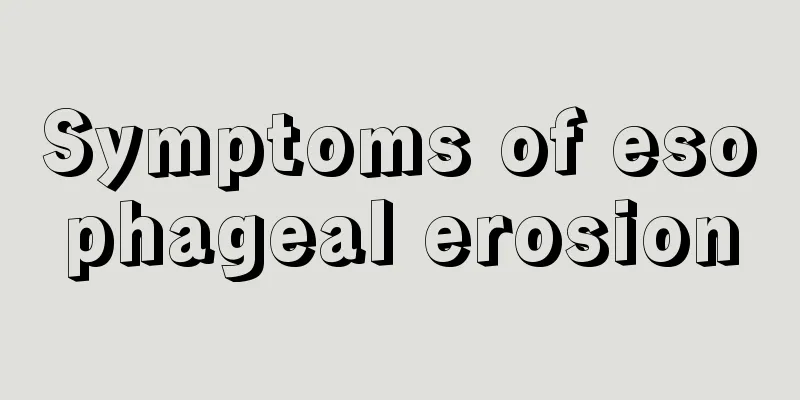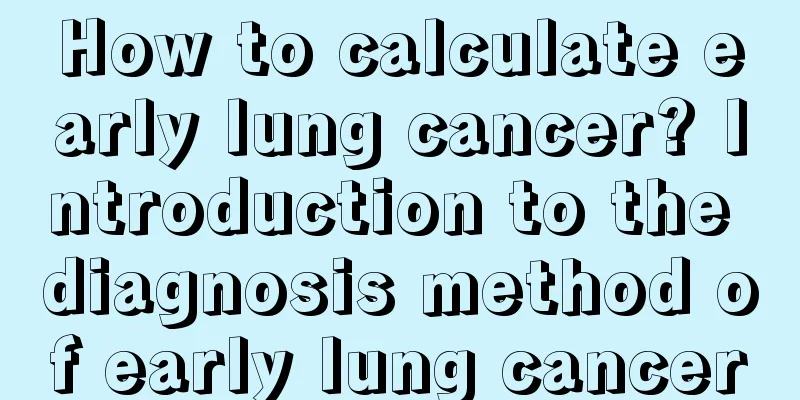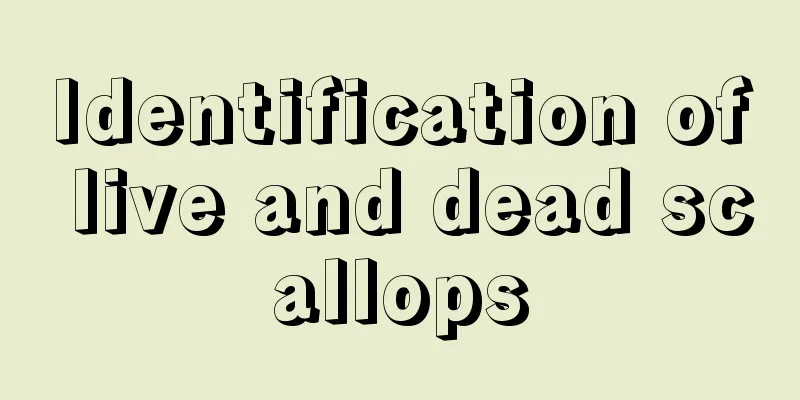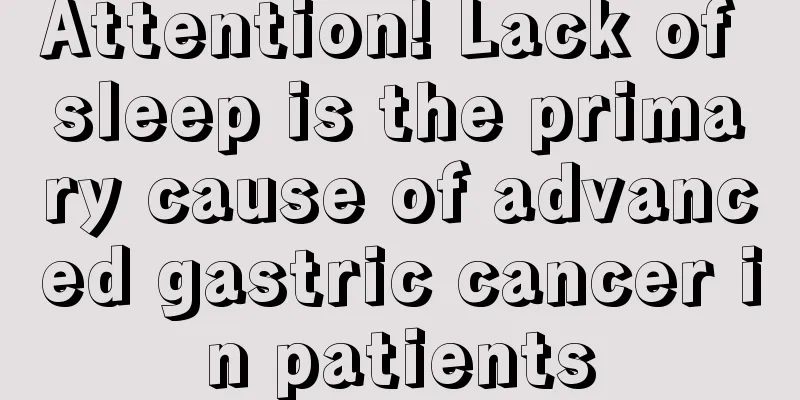Symptoms of esophageal erosion

|
Esophageal erosion refers to a phenomenon in which people have a strong burning sensation in their esophagus, which leads to inflammation of the esophagus and ulceration of the esophagus. Esophageal erosion is generally caused by gastric acid reflux into the throat, which causes the throat to be corroded by acid. Patients with esophageal erosions will have great difficulty swallowing, so they need to drink plenty of nutritious food. So, what are the symptoms of esophageal erosion? 1. Burning or pain behind the sternum It is the main symptom of this disease. Symptoms usually occur about 1 hour after eating, and can be induced by semi-recumbent position, forward bending or strenuous exercise. They usually disappear after taking antacids, but overheated or overly acidic food can aggravate them. For those who lack gastric acid, the burning sensation is mainly caused by bile reflux, so taking antacids will have no effect. The severity of the burning sensation does not necessarily correspond to the severity of the lesion. In severe esophagitis, especially in those with scarring, there may be no or only a mild burning sensation. (ii) Gastric and esophageal reflux After every meal, when lying forward, or sleeping in bed at night, acidic liquid or food refluxes from the stomach and esophagus into the pharynx or mouth. This symptom often appears before the burning sensation or burning pain behind the sternum. (III) Difficulty in swallowing In the early stages, intermittent dysphagia may often occur due to secondary esophageal spasm caused by esophagitis. In the later stage, due to the formation of esophageal scarring and stricture, the burning sensation and burning pain gradually decrease and are replaced by permanent dysphagia. Eating solid food may cause a feeling of blockage or pain in the xiphoid process. (IV) Bleeding and anemia Severe esophagitis may cause esophageal mucosal erosion and bleeding, usually chronic small amounts of bleeding treat According to the different causes, choose the corresponding treatment principle 1. Eliminate the cause of the disease. 2. Gastric acid inhibitors and mucosal protective agents. 3. When there is concurrent infection, antibiotics (bacterial, fungal) will be given for treatment. 4. Provide hemostatic treatment (including endoscopic) when bleeding occurs. 5. When symptoms of stenosis or obstruction occur, endoscopic dilation and stent placement may be considered. |
<<: Symptoms of vocal cord nodules
>>: Skin symptoms of over-cleansing
Recommend
How to remove parasites from the human body
The human body needs a lot of vital energy to sup...
How to promote breast development during puberty
We all know that when entering puberty, it is the...
Where does prickly heat grow
Prickly heat is a skin disease that infants and y...
The main common causes of cardia cancer in life
It is very common for cardia cancer to appear in ...
Make stretching sounds while sleeping
Generally, doctors will recommend cod liver oil s...
The examination items for colorectal cancer include these items
Colorectal cancer is also a disease that cannot b...
The harm of unhygienic conditions
The harm of unhygienic conditions includes irrita...
Can running every morning help you lose weight?
Nowadays, there are more and more obese people, a...
How to check for lumbar muscle strain, combining symptoms and examination
The most common type of lumbar muscle strain is c...
How are muscle spasms treated?
Muscle spasm, commonly known as cramps, refers to...
Nutritional health is crucial for recovery from lung cancer
After the condition of lung cancer patients has i...
What are the postoperative treatments for thyroid cancer? What should be paid attention to after thyroid cancer surgery?
After thyroid cancer surgery, you can use drugs t...
What are the types of brainstem tumors?
Brainstem tumors can present with different sympt...
Does grass carp have many small bones?
Many friends who love to eat fish have a problem ...
Is contact with silver washing water harmful to the body?
Silver jewelry is a popular precious metal in our...









